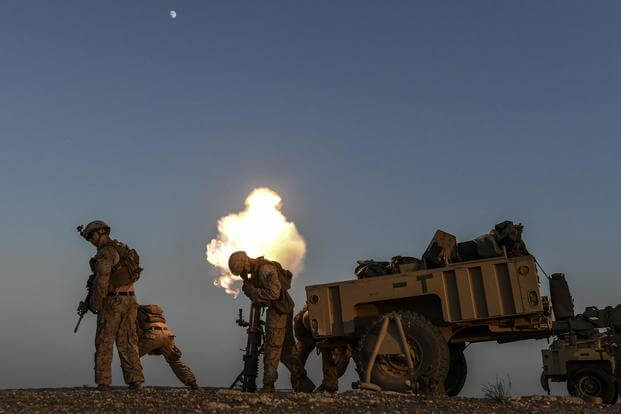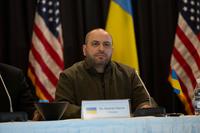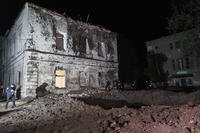Turkish President Recep Tayyip Erdogan said Wednesday that his military will try to avoid clashes with U.S. troops during a planned operation in Syria against U.S.-backed Kurdish militias fighting ISIS.
"Our target is not the American soldiers. It is the terror organizations that are active in the region," Erdogan said at a defense industry conference in Ankara, according to Turkey's Anadolu news agency and other Turkish outlets.
Erdogan said the Turkish military would move into Syria "within days" to clear the town of Manbij and other areas of northeastern Syria where U.S. troops were manning observation posts in an effort to stabilize the region.
U.S. troops also recently began running joint patrols with the Turkish military in Manbij, a flashpoint town that Turkey claims harbors elements of the YPG (People's Protection Units).
The Kurdish YPG has been a main contingent within the U.S.-backed Syrian Democratic Forces, which drove ISIS from Raqqa, once the capital of the "caliphate," and is now pressing the last ISIS pocket in the town of Hajin on the Syria-Iraq border.
In an informal session with Pentagon reporters last month, Defense Secretary Jim Mattis rejected Turkey's charges that the YPG was allied with the PKK (Kurdistan Workers Party), which has been labeled a terrorist organization by Turkey and the U.S.
Mattis said the Turks "don't like our relationship" with the YPG, "and I understand where they're coming from. But we do not say that YPG is the same as PKK."
Mattis also used the informal session to announce that small units from among the estimated 2,000 U.S. troops in Syria would move north to set up observation posts near the Turkey-Syria border.
He said the main purpose of the posts was to provide Turkey, a NATO ally, with early warning of potential threats, but Turkey viewed the move as an effort to protect the YPG. In October, the Syrian Democratic Forces (SDF) suspended the offensive against Hajin when the Turkish military shelled the YPG in northeastern Syria.
In his remarks Wednesday, Erdogan charged that the U.S. was "not being honest" in describing the purpose of the observation posts.
"We know that the aim of the radar and observation posts set up by the United States is not to protect our country from terrorists, but to protect the terrorists from Turkey," Erdogan said.
The alarming statements from Erdogan marked the latest sign of friction between the U.S. and Turkey, which has drawn close to Russia and Iran in seeking an end to Syria's civil war.
Turkey also has angered the U.S. and other NATO allies with its agreement to purchase advanced S-400 surface-to-air missiles from Russia.
At the Pentagon Tuesday, spokesman Army Col. Rob Manning said in a statement that the U.S. had completed setting up the observation posts at Mattis' direction "to address the security concerns of our NATO ally Turkey."
"We take Turkish security concerns seriously and we are committed to coordinating our efforts with Turkey to bring stability to northeastern Syria," Manning said.
He quoted Mattis on the purpose of the mission: "We want to be the people who call the Turks and warn them if we see something coming out of an area that we're operating in."
Also at the Pentagon on Tuesday, Col. Jonathan Byrom, commander of the Army's 3rd Cavalry Regiment and deputy commander of Joint Operations Command-Iraq, said that artillery units from his command have been using a firebase in Iraq for cross-border fire into Syria against ISIS targets and in support of the SDF offensive against Hajin.
Soldiers from Bravo Battery, 3rd Cavalry Regiment, part of Task Force Rifles, have been using M777 towed 155mm howitzers in the fire missions from Iraqi Firebase Saham on the border, Byrom said in a video conference from Baghdad to the Pentagon.
The U.S. battery has been joined at Firebase Saham by French artillery units using CEASAR 155 self-propelled howitzers and Iraqi Security Forces units using M109 Paladin self-propelled 155mm howitzers, Byrom said.
The fire missions have been "fairly intense, more intense than others I've seen in the past," Byrom said, "and they're directly contributing to the protection of the Iraqi border."
-- Richard Sisk can be reached at Richard.Sisk@Military.com.













